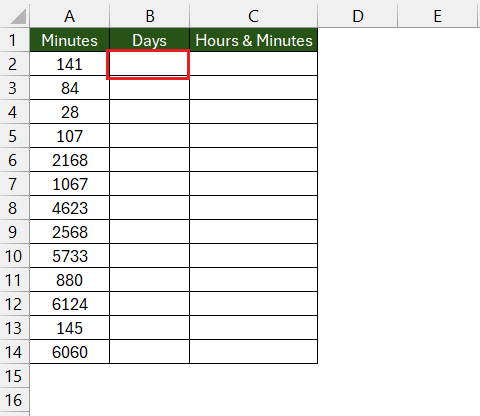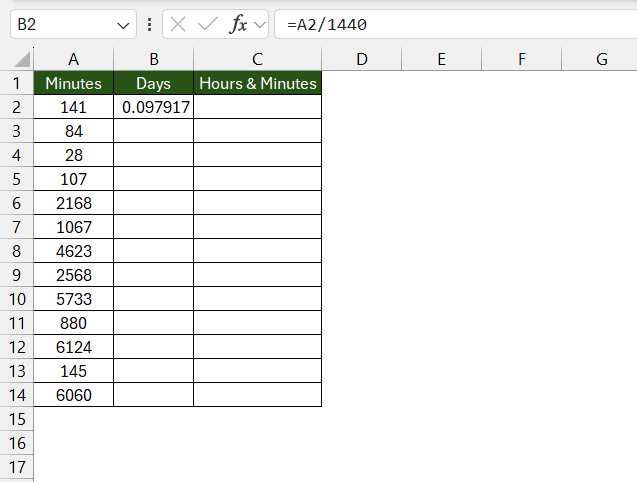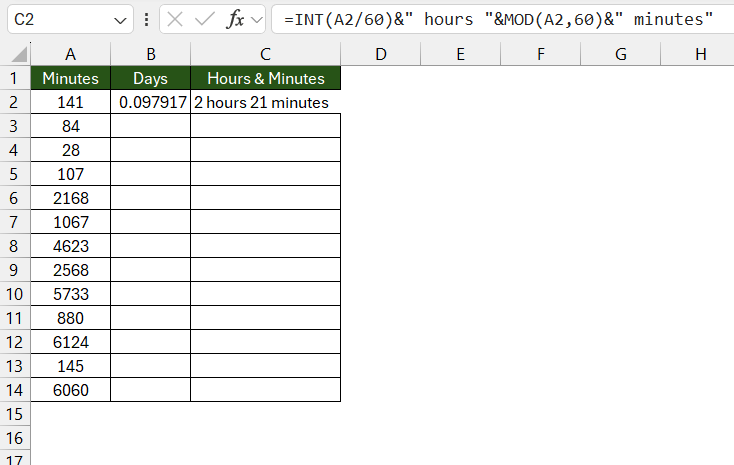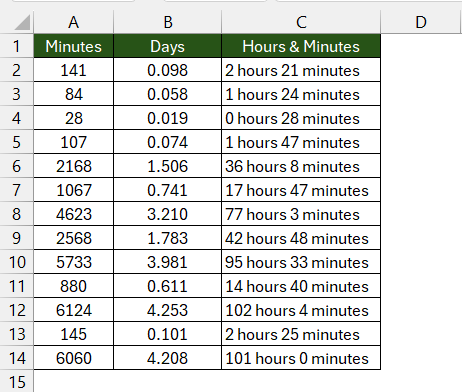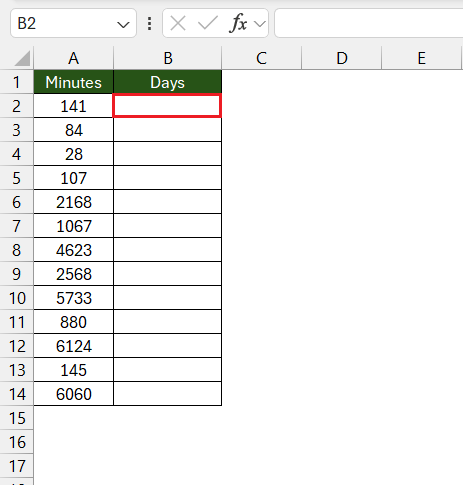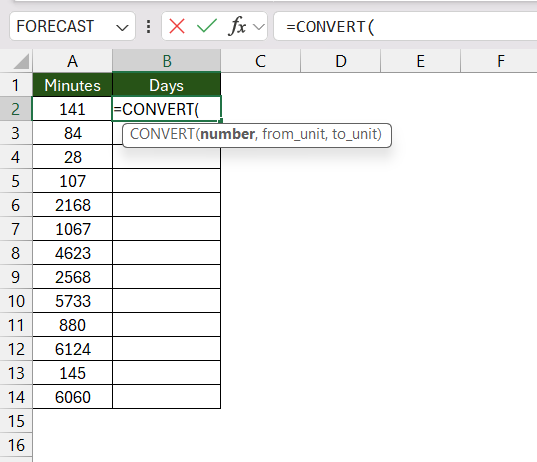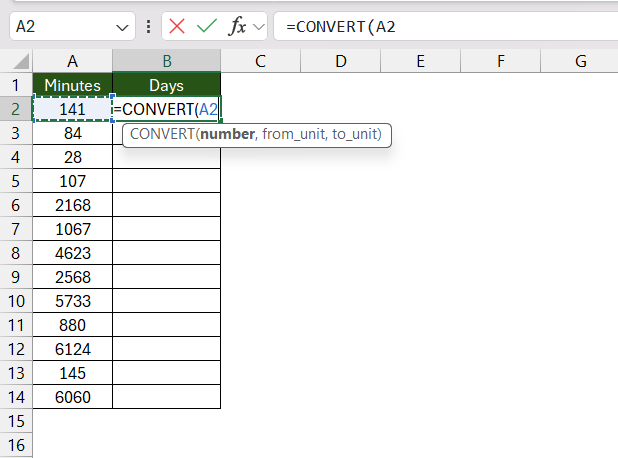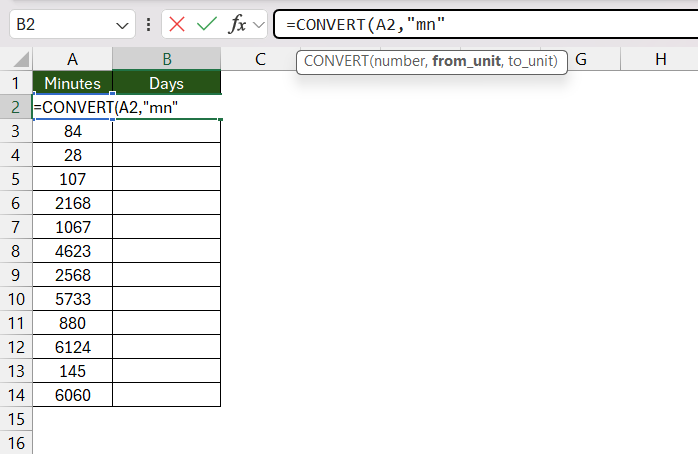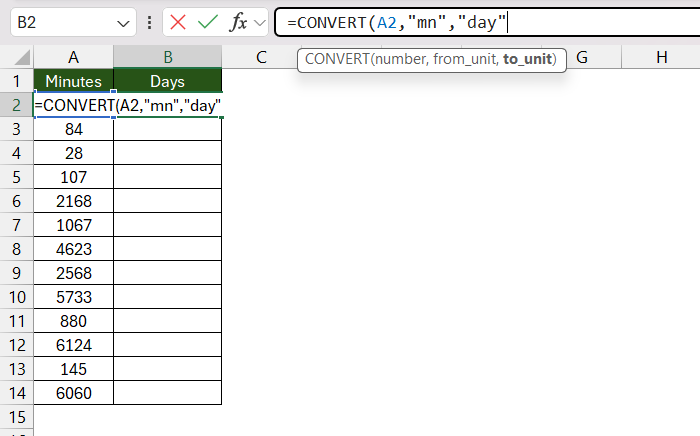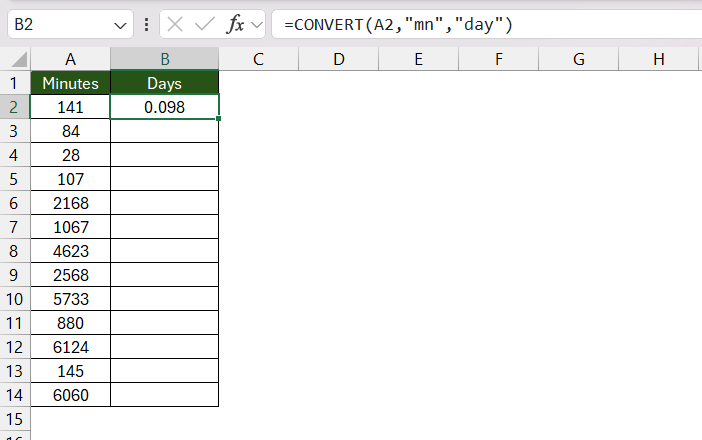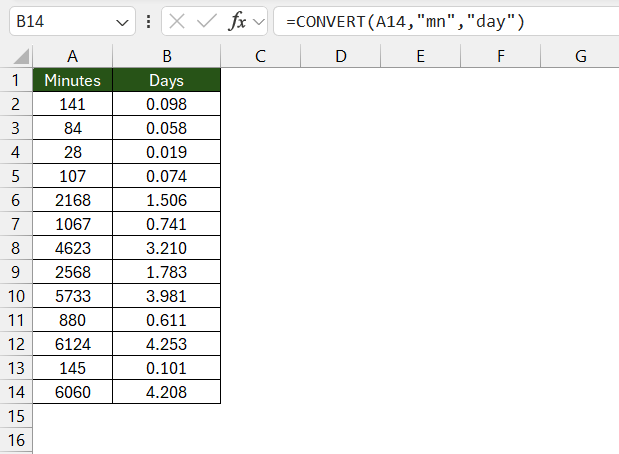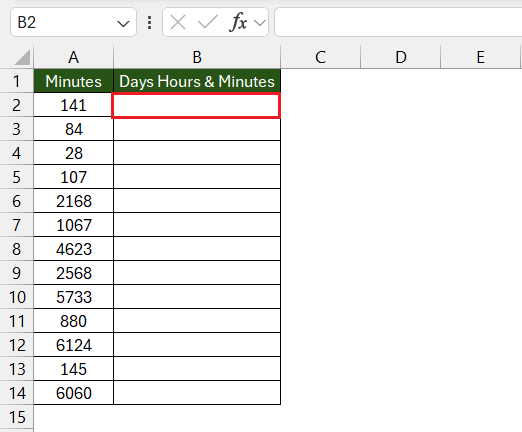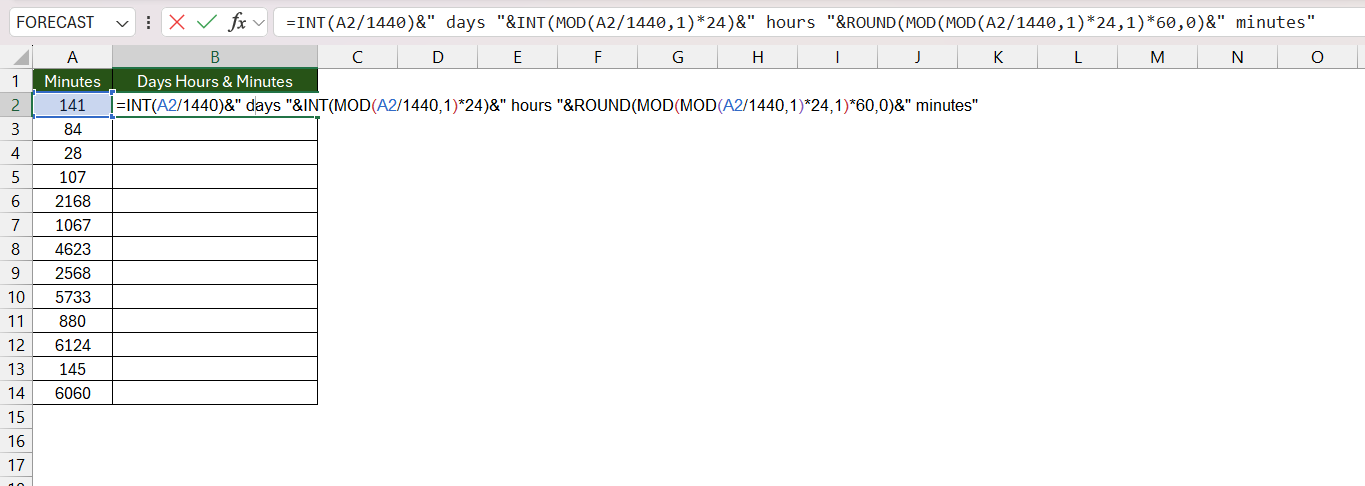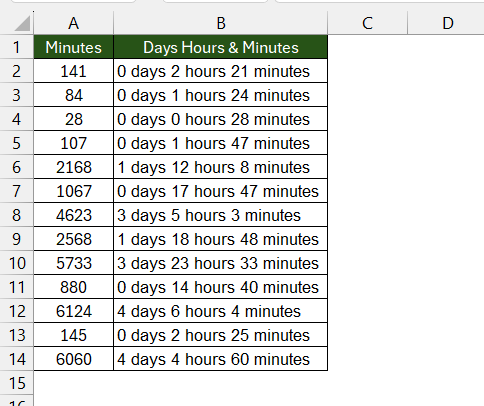Mastering time conversion in Microsoft Excel significantly boosts efficiency in data analysis, serving as a crucial tool for better time management. Excel’s robust functions enable the seamless transformation of time units, from minutes to days and hours, simplifying complex analyses. Understanding and applying these functions allow analysts to present data in a clear, precise manner, enhancing the storytelling aspect of data analysis.
Key Takeaways
- Excel’s Time Format: Excel represents time as a fraction of a day, making it a potent tool for time-related calculations.
- Manual Conversion Process: Converting minutes to days and hours manually involves simple arithmetic and Excel formulas, offering straightforward solutions to common time conversion needs.
- Utilizing Excel Formulas: The CONVERT function, along with a combination of INT and MOD functions, provides accurate, easy-to-implement solutions for converting time units.
- Avoiding Common Pitfalls: Proper cell formatting and precise function use are critical to avoid common mistakes in time conversion within Excel.
Table of Contents
Introduction: Master Time Conversion in Excel
The Importance of Time Management in Data Analysis
When you’re diving into the ocean of data analysis, each moment savored can be a treasure found. Efficient time management isn’t just a skill; it’s an essential tool that separates a good analysis from a great one. By effectively converting and interpreting time units in Excel, you can ensure that your data tells a story that’s as accurate as it is compelling.
Excel as a Tool for Efficient Time Transformation
Excel stands as a powerful ally in the quest for effective time management in data analysis. With its broad assortment of functions and capabilities, Excel serves as a veritable Swiss army knife, enabling you to transform time data with agility and precision. Whether you need to convert minutes to hours, tally up time spans, or create time-based projections, Excel is your go-to for efficient time transformation.
The Basics of Time in Excel
Understanding Excel’s Time Format
Excel’s time format is a clever representation of the day’s 24 hours. In this system, one whole day equates to the number one. Therefore, any unit of time can be translated into a fraction of that. For instance, one hour is 1/24, half a day is 0.5, and so on.
This format allows for seamless calculations and manipulations within Excel, making it a robust tool for time-related computations.
Key Concepts for Converting Time Units
To adeptly navigate time conversions in Excel, there are a few key concepts to keep in your toolkit:
- The Basic Time Unit: Understand that Excel treats a day as the standard unit of time, with days represented as whole numbers and fractions thereof denoting hours, minutes, and seconds.
- Conversion Factors: Recognize that hours, minutes, and seconds relate to each other by factors of 60, which you’ll need to use when converting one unit to another manually.
- Modulo Operation: Familiarize yourself with the MOD function, which can help you find remainders, essential for breaking down time into days, hours, and minutes.
- Division and Multiplication: Get comfortable using these basic operations to scale your time values up or down depending on the desired conversion.
- Leveraging Functions: Excel’s repertoire of functions, like CONVERT, can make these conversions a breeze without manual calculations.
With these concepts in mind, you’re ready to tackle time conversion with confidence and speed.
Convert Minutes to Days & Hours
Step-by-Step Process to Convert Manually
Let’s breeze through the process of converting minutes to days and hours in Excel manually:
STEP 1: Begin by determining the number of minutes you wish to convert. Place this value in a cell, say A2.
Remember the relationship: 1 day = 24 hours = 1,440 minutes. This will be your conversion factor.
STEP 2: In cell B2, enter the formula =A2/1440 to convert minutes to days. Press ENTER to see the conversion result displayed as a day fraction.
STEP 3: Now, to convert the fractional day into hours and minutes, enter the formula =INT(B5/60)&" hours "&MOD(B5,60)&" minutes" in cell D5. Hit ENTER to obtain your time in hours and minutes.
STEP 4: Finally, drag the Fill Handle from C5 and D5 down their respective columns to apply the formula to multiple entries at once.
And there you have it! This manual method allows for a straightforward conversion using simple arithmetic.
The CONVERT Function: A Time-Saving Feature
Unleash the power of efficiency in Excel with the CONVERT function, a nifty feature that can streamline your time conversion tasks:
The CONVERT Function: A Time-Saving Feature
- Simplicity at Its Best: Use the
CONVERTfunction to seamlessly transform minutes to days or hours with minimal fuss. Just enter=CONVERT(A1, "mn", "hr")or=CONVERT(A1, "mn", "day")to watch the magic happen. - Precision and Clarity: Favoured for its precision, the
CONVERTfunction takes the guesswork out of manual conversions, offering clear and exact results.
Now let’s dive in:
STEP 1: Select the Cell: Click on the cell where you want the converted result.
STEP 2: Enter the Formula: Type =CONVERT(,
STEP 3: Specify the Value: Click on the cell that contains the minute value.
STEP 4: Set Original Unit: Type "mn" to tell Excel that you’re starting with minutes.
STEP 5: Choose Conversion Unit: Type "hr" for hours or "day" for days, depending on your need.
STEP 6: Complete the Function: Close the parenthesis and press ENTER to behold the conversion.
STEP 7: Roll it Out: Use the Fill Handle to apply the formula across multiple entries.
The CONVERT function offers a straightforward, no-frills approach to time conversion in Excel, freeing up precious time for other analytical tasks.
Pro Tip: When using CONVERT, the list of units Excel provides can serve as a handy guide, but you’re not restricted to it. Feel free to type in the units manually to suit your precise needs.
Combining INT and MOD Functions for Precision
Harness the dual strengths of Excel’s INT and MOD functions for a meticulous breakdown of minutes to days, hours, and minutes:
Combining INT and MOD Functions for Precision
- Analogous to Time’s Components: Think of
INTas the function for extracting whole days andMODfor the remainder in hours and minutes. They work much like hours and minutes do in timekeeping. - Fusion for Accuracy: By working together, these two functions can provide you with an accurate representation of lengthy time periods in a more digestible format.
And here’s how you weave the two together:
STEP 1: Position the Formula: Select the cell where you want your converted time to appear.
STEP 2: Type in the Magic Wand: Enter: =INT(B5/1440)&" days "&INT(MOD(B5/1440,1)*24)&" hours "&ROUND(MOD(MOD(B5/1440,1)*24,1)*60,0)&" minutes"
The formula first divides the minutes by 1440 (the number of minutes in a day) to find the days, then uses INT to get whole numbers and MOD to find the remaining hours and minutes.
STEP 3: Press ENTER: Once you do, the cell will magically display your time formatted as “X days Y hours Z minutes.”
STEP 4: Copy-Paste with Ease: Drag the cell’s corner across the range you need to convert en masse.
This powerful combo becomes indispensable when dealing with prolonged time frames, providing an unhindered view of time segments down to the minute.
Caveat: Keep a vigilant eye on the cell formatting here as well; you need to ensure it’s set to ‘General’ or ‘Text’ to properly display the concatenated strings.
By integrating these functions, workflows can maintain an unprecedented level of precision and clarity. Thus, the INT and MOD formula not only enhances accuracy in reporting but also fortifies one’s Excel proficiency.
Common Pitfalls and How to Avoid Them
Navigating through Excel’s time conversion can sometimes lead you through murky waters. Here’s how to steer clear of common pitfalls:
- Incorrect Cell Formatting: Excel might mistake time values for text or numbers. To avoid this, ensure your cells are formatted correctly as ‘Time’ or ‘Custom’ to display days, hours, and minutes.
- Ignoring Time as Fraction of Days: Remember, Excel sees time as a fraction of a day. Not keeping this in mind can skew your results. Always consider this when manually entering or computing time values.
- Rounding Errors: When converting from minutes to days or hours, rounding can lead to inaccuracies. Use functions like ROUND, FLOOR, or CEILING to control the level of precision.
- Misusing Functions: Certain functions like INT can truncate your decimal numbers, drastically changing your time values if used incorrectly. Familiarize yourself with the purpose of each function to prevent misuse.
- Overcomplication: Sometimes it’s best to keep it simple. With manual conversions, avoid overly complicated calculations and stick to the straightforward conversions.
By consistently scrutinizing your formatting and calculation approaches, you can easily sidestep these common errors.
Practical Applications and Examples
Real-World Scenarios: When You’ll Need These Conversions
In the professional realm, converting minutes to days and hours isn’t just an academic exercise; it’s an operational necessity. Here are scenarios where mastering these conversions in Excel becomes invaluable:
- Project Management: Tracking project timelines and assigning realistic deadlines often requires converting minutes spent on tasks into day parts for efficient scheduling and time allocation.
- Payroll Processing: When calculating wages, especially for hourly employees, you may need to convert the total minutes worked into a format that breaks down days and hours for accurate payroll computation.
- Event Planning: Precise time budgeting is essential while planning events or conferences. Conversions help in detailing the timeline of activities from preparation to the event’s conclusion.
- Data Analysis and Reporting: For analysts, converting and aggregating time data facilitates better trend analysis, forecasting, and comprehensive reporting.
- Science and Research: Time conversions are vital when documenting experiment durations or observing processes that span across different time scales.
Each of these examples underscores that no matter your industry or role, being sharp with time conversions in Excel can make a significant difference in your effectiveness and productivity.
By internalizing these skills, you can navigate through time-related data scenarios with ease and make informed decisions bolstered by accurate calculations.
FAQ: Your Time Conversion Questions Answered
What is the formula for minutes to days?
To convert minutes into days in Excel, use the simple arithmetic formula: =minutes/1440, where 1440 is the total number of minutes in a day. This will give you the result in days as a decimal. For instance, to convert 3,000 minutes to days, enter =3000/1440.
How can I convert large volumes of minutes to days and hours?
For converting large volumes of minutes to days and hours in Excel, consider the INT formula: =INT(minutes/1440) & " days " & INT((minutes/1440 - INT(minutes/1440)) * 24) & " hours ". Apply this to your data range, and Excel will compute and display the transformation in a days and hours format.
Pro Tip: Utilize the Fill Handle to drag the formula down to apply it to multiple rows of minute data.
What if my conversion results seem incorrect?
If your conversion results seem incorrect, double-check the cell formatting to ensure it’s set for the appropriate data type (e.g., General, Number, or Time). Also, verify the accuracy of your formulas and ensure you’re using the correct conversion factors. If issues persist, consult Excel’s function help or seek advice from online forums.
How do you convert numbers to days hours minutes in Excel?
To convert numbers to a format of days, hours, and minutes in Excel, use this formula: =INT(number/1440) & " days " & INT(MOD(number,1440)/60) & " hours " & MOD(number,60) & " minutes". This breaks down the total number of minutes into separate components of days, hours, and minutes.
Be sure the cell is formatted as text to view the full string result.
John Michaloudis is a former accountant and finance analyst at General Electric, a Microsoft MVP since 2020, an Amazon #1 bestselling author of 4 Microsoft Excel books and teacher of Microsoft Excel & Office over at his flagship MyExcelOnline Academy Online Course.

